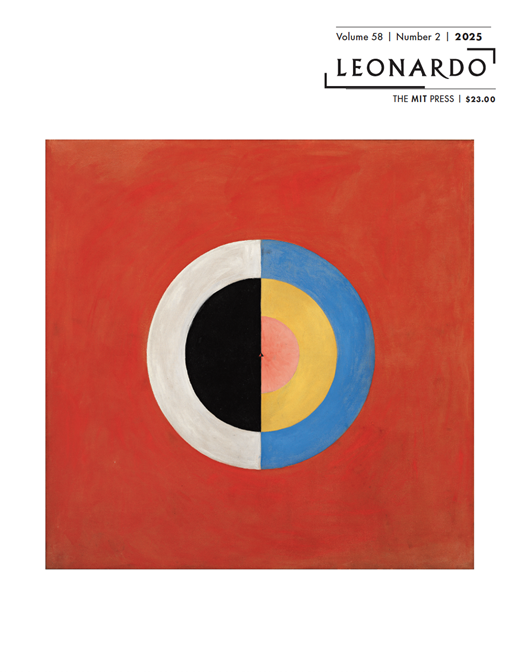Lightyears:
An Auditory Navigation through Coppice’s Draw Agreement
2025
Abstract
Elucidating the structure of its retrospective triptych Draw Agreement (2023), Coppice (Noé Cuéllar and Joseph Kramer) overviews the technics driving its musical experimentation 2009–2022. Rich in sound, musical, technological and listening concepts, these notes serve to accompany the navigation of Coppice’s music as referenced from the three-part construct, while pointing to other related works. Through documentation and metaphor, recurring themes are identified in Coppice’s sonic thinking, culminating in a spatiotemporal synthesis of actuality and simulation in an increasing convolution of auditory reflexivity. In parceling this 13-year experimental musical object, Coppice attains and continues building upon an auditory perspective that stirs postphenomenological embodiment, shifting spatiotemporal values and creative mediative processes reflective of artistic, technological and auditory cultures today.
Navigation
In introducing his philosophy of technology, with focus on human-technology relations, postphenomenologist Don Ihde describes philosophy’s dual function to provide “a perspective from which to view” a particular “terrain,” and “a framework or “paradigm” for understanding.”¹ [P]art of that attainment of perspective,” Ihde writes, “calls for the right amount of distance […] For insofar as critical thinking is like seeing, both that which is too close (the tip of our nose) and that which is too far (beyond the horizon) are simply not clearly discernible.”² He describes the dominant philosophical standpoint of observing ‘from above’ or as if from a satellite, and its inadequacy to examine technological culture from such a view, as “inhabiting the satellite would better illustrate precisely the enmeshment, the enclosure we have in our technosphere. The space vehicle is […] the enclosed layer by and through which we would be taking our sightings. Far from giving us distance upon the phenomenon, we end by simply taking it for granted.”³
Ihde proposes instead a navigational metaphor for establishing proper perspective:
The navigator, in the very midst of the sea where both boat and sea are in motion, must take bearings, find a direction, and locate both himself and his destination. This perspective occurs in a dynamic and fluid situation and is necessarily relativistic, yet just such a situation is normal for the navigator.
The navigational perspective is quite self-consciously aware of being in the midst of what is occurring, but the navigational problem is to locate reference positions through some means of variations. Here there is at least one good lesson that can be learned from space travel as well. Astronauts living in the various cocoons we have devised find themselves weightless. Their earthbound reference point, gravity relating to our normally upright posture, was missing. They had to choose a reference point from which to move. […] they had to relearn a kind of bodily motility in a new frame of reference, and thus they invented a new kind of bodily navigation. Similarly, in the various styles of navigation, some means of referencing and some set of variations have to be established to attain the relativistic locations crucial for finding our way about.⁴
This positioning gives way to Ihde’s postphenomenological relations and phenomenologies of sound and listening. In Listening and Voice: Phenomenologies of Sound he regards a radical transformation in the embodiment relations of viewing through a telescope that is placed on a tripod, “[removing] the bodily magnified motions a hand held telescope was prone to; to eventually motorize the telescope to counteract the effects of earth motion further move it toward “objectivity” without removing the visual need for observation.”⁵ Similarly, the history of musical instruments “evidences a move from direct bodily expressive musics to more instrumentally mediated musics, and in late modernity, on to musics that are or can be more indirectly related to first-person practices,” including recorded music.⁶
In Acoustic Technics Ihde poses a new framework for understanding music today by refreshing the meaning of recorded music as not “simply copies of, or representations of previous or simply performed music,”⁷ but instead, “new combinations of technologies in a complex gestalt” that can be considered an instrument or an “instrument set,” a “growing aggregation of parts from which music is produced.”⁸ As an instrument, recorded music of this kind is a “large, high tech, and communal in the production of new musics.”⁹
In a recurring reference to Galileo, Ihde states that he “insisted that in order to see what he saw, he needed to train the novice telescope user, not unlike the training which must go into producing a good tone and sound from any musical instrument.”¹⁰ Drawing a parallel “between scientific and musical instruments with respect to the […] role of intentionality,” Ihde describes how human action “is mediated through [instruments] to produce its result,”¹¹ and thus produce knowledge. Postphenomenological thinking is key to considering Coppice’s intention to provide orientation for musical and auditory variations. In this line of thought, the recorded production Draw Agreement (Ferns Recordings, 2023) functions as a multistable instrument for auditory postphenomenological embodiment.
While this writing does not describe the specifics of Coppice’s repertoire of instrumentation, those can be referenced throughout Coppice’s website and the transcribed lecture Legend of Passing Time with Instruments and Captions.¹² In brief, Coppice’s instrumental trajectory has shifted in focus from acoustic and electronic instruments performed live, to analog and digital electronics, to its own self-reflexive quoting of recordings, a progression similar to Ihde’s observation of a tendency in musical instrumentation’s increasing indirectness to first-person practices. Throughout this progression Coppice has accreted techniques that seek to induce embodied auditory effects via layered stereo productions, culminating in Draw Agreement’s compendium of creative processes. With regard to Ihde’s ideas, Draw Agreement contributes to this line of musical instrumentation as a composite auditory instrument to play (with).
Ihde’s philosophical and metaphorical approaches provide analytical resonance for apprehending Coppice’s experimentation. This writing sequences Coppice’s creative approach enmeshed in perspectival dilemmas (and metaphors) as artistic subject matter within experimental music and sound art. A navigational attitude is offered to guide the aesthetic experience of perplexing phenomena in Draw Agreement and in the auditory dimension at large where disorientation can occur.
Opening
Coppice was founded by Noé Cuéllar and Joseph Kramer in Chicago in 2009, as an inquiry into the capture and generation of music and its relationship to its physical sources. Its compound studies include Bellows & Electronics (prepared pump organs, shruti boxes and tape processors) between 2009–2014, and Physical Modeling & Modular Syntheses between 2014–2018; focusing on the interactions between direct and reproduced sound, and the perceptual links between original and emulated sources, respectively. Its third study in Phonography & Fiction (2018–2022) scrutinizes the dynamics between its previous two studies, turning away from musical instrumentation and toward devices of capture and reproduction. Strongly addressing site-specificity, this third study also regards temporal-specify within architectural and technological structures.
With sustained interest in sound’s capacity to cross domains, Coppice crafts pathways between music and technology in a cross-disciplinary language, resulting in work that is an ongoing documentation of experimental music in-formation. Operating in cycles of instrument construction and modification, recordings and live presentations, its productions incorporate sound design, sculpture, installation, software, images and video.
Metaphorical Devices
Having investigated interests in obsolescence and preservation in instruments and devices since its inception, Coppice transposed such exploration to a larger physical scale in documenting the acoustic characteristics of the Yerkes Observatory in Williams Bay, Wisconsin, during its temporary closing in 2018. Using the observatory as an instrument, mechanically and architecturally (not dissimilar to mechanical pump organs or tape machines, being pneumatic and rotational), Coppice composed several works that narrate that shift in scale from instruments to spaces as part of an experimental music process. The audio paper Stewardship to Obsolescence and Preservation: Listening to Specimen Music through Yerkes Observatory’s Refractor and Reflector Telescopes¹³ conceptually questions the crisscrossing of documentary and fiction in regard to memory vis-à-vis technological perspectives.
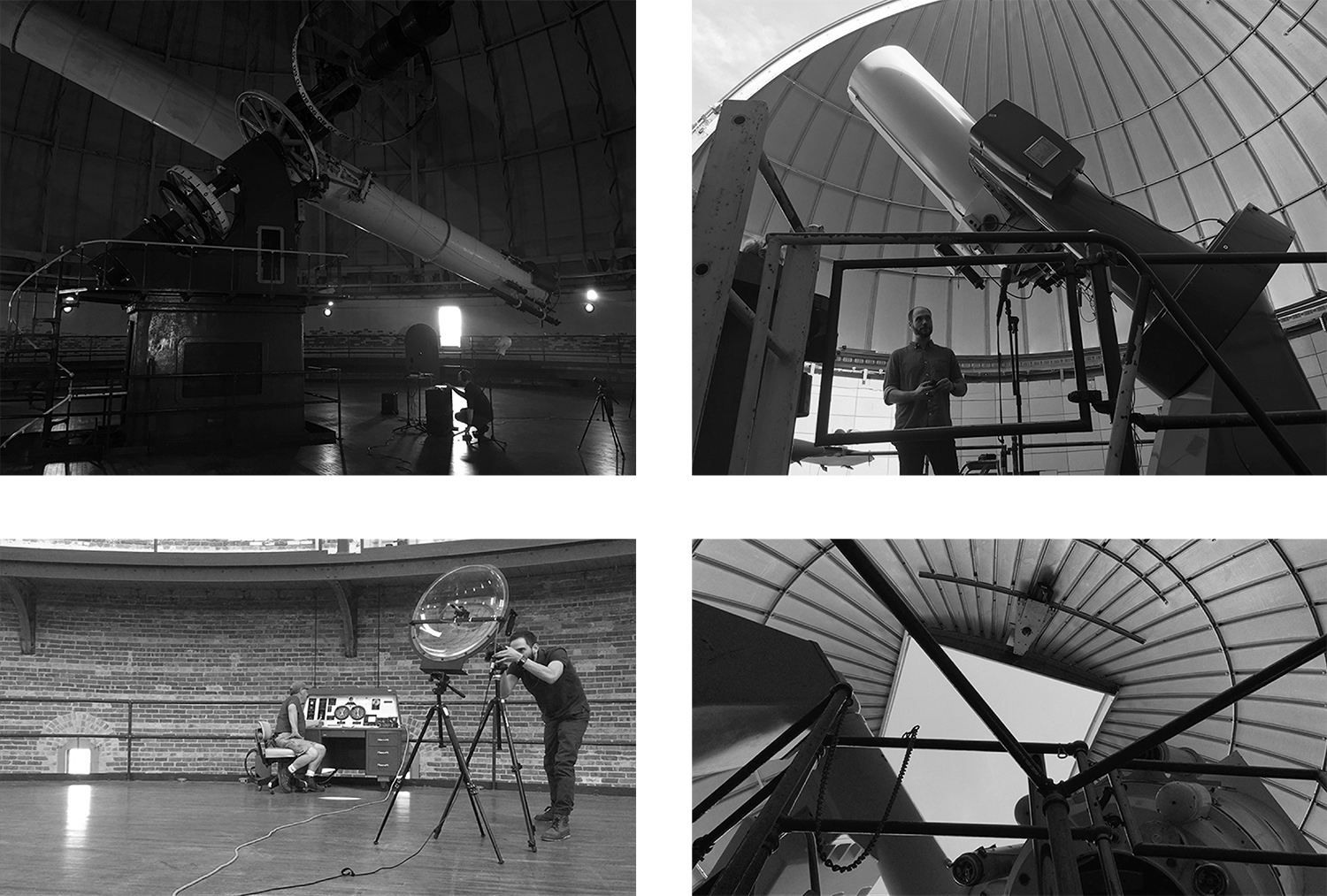
Fig. 1. Coppice capturing the Yerkes Observatory’s Great Refractor and two reflector telescopes in Williams Bay, Wisconsin in May 2018. (© Future Vessel)
Founded in 1892, the Yerkes Observatory houses two reflector telescopes and the largest refractor telescope in the world (Fig. 1). Refraction and reflection are descriptors used by Coppice to convey its first two studies, corresponding to the ‘refraction’ of signal processing and tape delay effects characteristic to its first, and to the ‘reflection’ of simulations and sound designs centered on analog and digital syntheses in its second study. Building upon these analogies, Coppice’s third study in Phonography and Fiction is ascribed ‘diffusion’ given its turning of attention away from instruments, and instead toward devices of capture and reproduction and their relation to the spaces in which they operate. As do telescopes peering into a night sky, this third study figures a ‘lens’ through which a ‘sonic observation’ of Coppice’s musical past can take hold: so is the premise of the audio paper.
As metaphorical devices, refraction, reflection and diffusion characterize each study, while the observatory gives structure to Coppice’s narration of its overarching musical experiment. Extending from the audio paper, the three-part retrospective Draw Agreement offers a sequence of auditory and technological effects that build upon another. The first disc, Abridgements, presents abbreviations of each study, and the second a third discs ‘frame’ those abridgments: Observatory Sound in the simulated likeness of the Yerkes Observatory’s acoustics, and Sonic Observation in an actual performance space. Nesting and manipulating each study’s timelines, Bellows & Electronics (2009-2014) in allusion to Refraction, Physical Modeling & Modular Syntheses (2014-2018) in allusion to Reflection, and Phonography & Fiction (2018-2022) in allusion to Diffusion, Draw Agreement inscribes a spatiotemporal synthesis of Coppice 2009–2022.
Temporal Composition: Abridging
Coppice abridges its first two studies by assembling short pieces by quoting audio from each. The sonic palette specific to each study is conveyed in just under 7 minutes: Circumpass (2013) abbreviating Bellows & Electronics, and Compass (2018) abbreviating Physical Modeling & Modular Syntheses. While Circumpass is composed of audio samples, Compass samples not only audio, but software instruments performed again specifically for the piece. Abbreviating Phonography & Fiction, Hourglass (2022) references Coppice’s encompassing sonic palette across all three studies, 13 years of work conveyed in the duration of one hour, using the same montage techniques that make up Circumpass and Compass.
In addition to these three abridgments, At the Poles is a shorter work that juxtaposes unaltered solo performances for prepared pump organ (an Estey performed by Noé Cuéllar in January 2013) and modular syntheses (performed by Joseph Kramer in May 2016), each of which has been pulled out of their original context in the compositions Soft Crown (from Vantage/Cordoned, caduc., 2014; and Soft Crown Transparencies, self-released, 2024), and Here (from Green Flame, caduc., 2018), respectively.
Spatial Composition: Sonic Framing
Having been composed as recordings (and not performances), the three abridgments are then used to demonstrate different acts of diffusion: simulated diffusion in a synthesized space based on the acoustics of the Yerkes Observatory (Compass and Circumpass nested in Observatory Sound), and in situ through Chicago Laboratory for Electroacoustic Theatre (CLEAT), a 16-channel 96-speaker sound system as binaurally documented at Elastic Arts in Chicago (Hourglass nested in Sonic Observation). In this way, a mise en abyme or picture-within-picture effect is rendered audible, to contemplate the shapeshifting identities of the experimental music process over time, as sonically ‘framed’ by and nested within kinds of spaces.
While the dilemma of an inherent lack of delimiting frames in the auditory dimension (raised by film and sound theorist Michel Chion) is explored more fully in the audio paper, Coppice’s interest in devising speculative frames continues in these various spatial composition techniques, which yield invitations to consider auditory relativities between actuality and simulation, facts and elaborations, sources and effects.
Philosopher of technology Marshall McLuhan writes:
Auditory space has no boundaries in the visual sense. The distance a sound can be heard is dictated more by its intensity than by the capacity of the ear. We might compare this to looking at a star, where visual sensation, transcending the vanishing point, is achieved, but at the sacrifice of the precise framework we call visual space. There is nothing in auditory space corresponding to the vanishing point in visual perspective.¹⁴
Considering Chion’s pointing out of the lack of a ‘sonic frame’¹⁵ that delimits sounds, and McLuhan’s impossibility of an ‘acoustic horizon,’ Coppice engages notions of fiction to propose its own. This is done through sonic and spatial syntheses that bring into juxtaposition the simulated diffusion of sound in virtual spaces and objects (in the likeness of actual counterparts) of Observatory Sound, and the actual diffusion of sound in a real space of Sonic Observation (from a binaural perspective). Presented as a polarity, a flux of auditions between actual and simulated diffusions are for Coppice necessary to demonstrate its imagination of sonic framing possibilities.
Exploded and Collapsed Auditions
Broadly speaking, Coppice’s oeuvre is characterized by oscillations between ‘exploded’ and ‘collapsed’ auditions. What is meant by exploded is that sound occurs in different points in an actual space where listeners also find themselves, in situ, amid sound installations with various degrees of performance. Collapsed refers to the audition of a technological auditory perspective (most often stereophony) of the original ‘explosions’ of sound in a space. Such ‘collapsing’ entails several transformations of sound that are compositionally considered, so that they in turn correspond to auditory transformations in a listener. As all recordings, those transformations afford a portable and repeated listening that may be private and open to ongoing variation of context.
Coppice’s early operations, that is, negotiations between spatial events and their technological capture, usually begin as spatial compositions (such as performed sound installations or staged performances) that are then compositionally adapted into stereo productions (and not simply recorded). Leading up to Draw Agreement, the following overview exemplifies works that were first conceived as exploded, spatialized multi-loudspeaker events, and were then collapsed or adapted into stereo productions that are not mere documentations. In-depth descriptions of these concepts and techniques are described in Dissecting Operations in Spatial Compositions through Acoulogy as Sonic Thinking.¹⁶
- Copse (2010), for prepared shruti box, Modified Boombox I, Inductive Table I, pitch pipes, harmonica, a funnel and eight small loudspeakers in a decentralized arrangement intersected by a flowing audience all around; is heard excerpted as a fixed and flattened stereo arrangement in the 7” record The Pleasance & The Purchase (Senufo Editions, 2012).
- Vinculum (Courses) (2011), a performed installation with free reed boxes, prepared shruti box, plastic tubing, accordion and eight small loudspeakers in wooden filters, presented on stage for a seated audience; was released digitally as a stereo mix down (Stasisfield, 2011). The variation Vinculum (Courses) [Version Baschet] (2011) was adapted for François and Bernard Baschet’s Aluminum Piano (1962), with pump organ, prepared shruti box and electronics; and is also heard mixed down to stereo recording (self-released, 2011).
- (The Flavor of Missing) Mortar (2011), Snow (2011), and Brim (2010), collected in Spans: Three Perspectival Accounts (Rhizome•s, 2015), are productions that were recorded live from multiple points in a space. Those points were then compositionally mixed in post-production, to evoke shifts in auditory perspective across the spatial acoustics of the recording sites.
- Vinculum (Coincidence) (2011) for four fixed loudspeakers playing aleatoric audio and two accordion performers in motion was performed for a total of eighteen hours over the course of three iterations in museum and art spaces. Stripping live and spatial elements, the fixed stereo arrangement re-titled Vinculum (Coincidence): Indexed Conjectures of Coincidence Imprints Once Happened (Agxivatein, 2015) shortens the work to the length of a CD and encourages randomized listening, to evade resemblance to linearity or documentary.
- Bypass (2013) for live amplified prepared pump organ and tape processes was adapted into a pair of fixed stereo recordings collected in the cassette tape Bypass Ideal (Hideous Replica, 2015), each side of the tape corresponding to each instrumental part in isolation.
- Soft Crown Transparencies (2014) is a work for custom software that allows navigable stereo listening of audio layers that otherwise are heard fixed in the stereo mix of Soft Crown from the album Vantage/Cordoned (caduc., 2014).
- Partly based on recordings of various live performances, Open on Occluded Conditions (untitled folder, 2017) degrades the quality of live recordings using both actual and simulated digital distortion and low fidelity noise.
- The reverse was explored in Coppice’s 2016 Turning Concert, in which full recordings were reproduced, in addition to the performance of live instruments, across multiple speakers of various types scattered throughout a performance space that remained ‘exploded’ without an auditory sweet spot, as it was intersected by listeners in motion: an event that did not collapse.
Nesting
This tendency of working in exploded and collapsed forms recurs in Coppice’s sonic documentation of Yerkes Observatory’s mechanics: the observatory’s large-scale architectural and mechanical features ‘reduce’ to their stereo representation in the audio paper and in Observatory Sound from Draw Agreement. One step further, the acoustics of the observatory are heard as recorded, but also as simulated: turned into a spatial-auditory plane of representation into which abridgments and other quotations or ‘specimens’ of Coppice’s music are inserted, as to simulate the verberation of Coppice’s music inside of Yerkes (verberation in its obsolete definition “vibration of the air that produces sound,” as referenced by Chion).¹⁷ Intertwined, the representation of Yerkes through actual recordings made in situ and spatial synthesis of its acoustics appear indistinguishable in these works. Awareness of their distinct forms of representation, however, primes the listening experience with inquiry toward their illusion and ambiguity.
The simulations of Yerkes’ acoustics were created by Coppice on site in 2018, over 120 years since Yerkes was founded. Those models or ‘impulse responses’ are used to simulate the diffusion of Compass and Circumpass, each corresponding with Yerkes’ two architectural wings, which respectively house refractor and reflector telescopes. Rotations in Refractor (Simulated Diffusion in the Likeness of the Yerkes Observatory) (2021) and Turning in Reflectors (Simulated Diffusion in Objects against the Yerkes Observatory) (2021) explore this kind of spatial synthesis. Together as Observatory Sound, this pair of works reveal a two-way figuration: Yerkes’ complex as a physical representation of Coppice’s experiments, and Coppice’s experiments as a musical representation of Yerkes’ complex (Fig. 2).
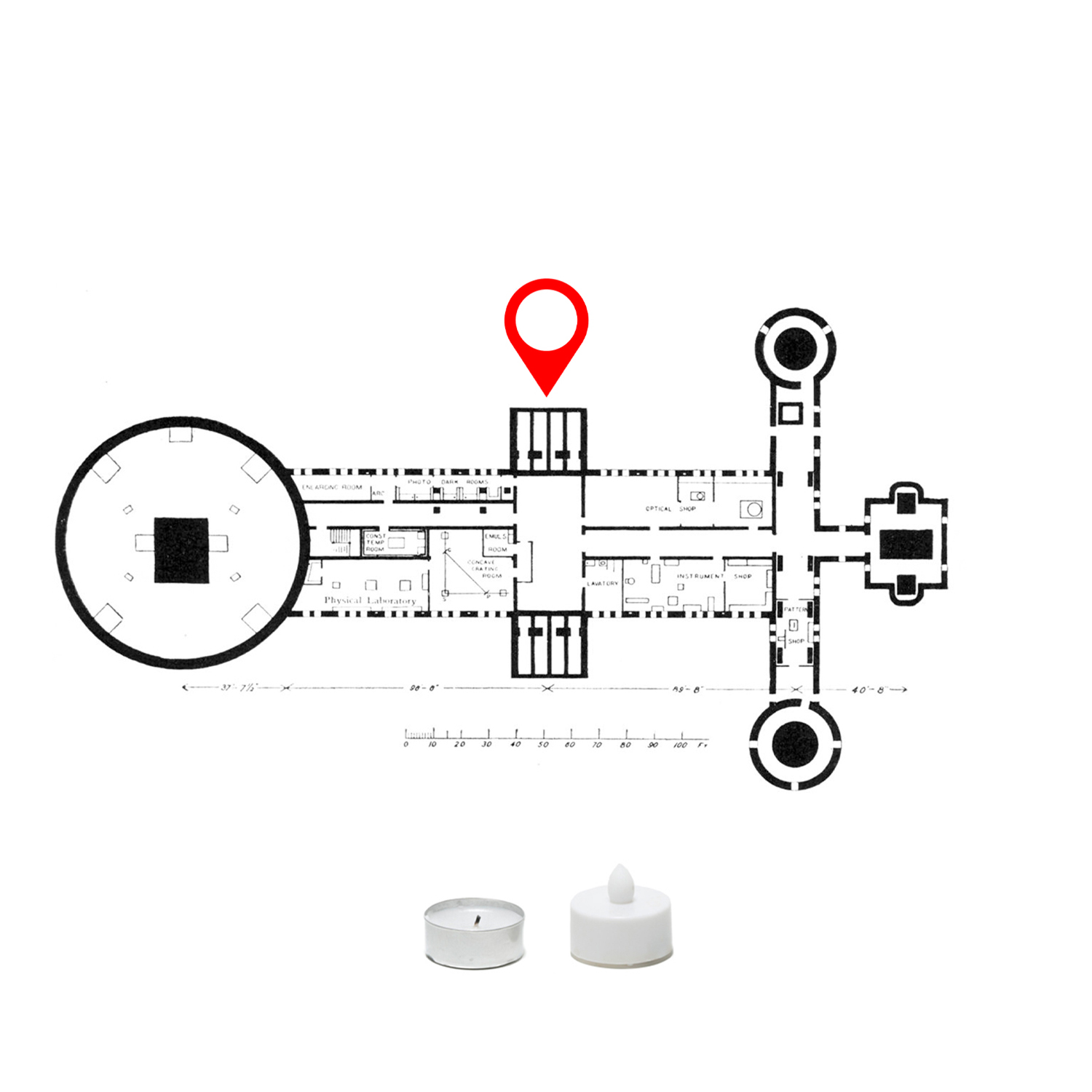
Fig. 2. Coppice visual representation of Observatory Sound, disc two from Draw Agreement (Ferns Recordings, 2023), including the plan (photograph copy) of the main floor published in George Ellery Hale’s “The Yerkes Observatory of the University of Chicago, II. The building and minor instruments,” Astrophysical Journal 5 (April 1897), from University of Chicago Photographic Archive, [apf6-00076], Special Collections Research Center, University of Chicago Library. (© Future Vessel)
Because an established vocabulary to describe certain nuances in sound and audition is limited, some wording guides are proposed. For example: the word ‘diffusion’ may refer to the way in which frequencies are affected by acoustic reverberation, as well as to the distribution of sounds across multiple loudspeakers. Because Coppice seeks to bring attention to its production processes, ‘simulated diffusion’ refers to spatial synthesis (in other words, artificial verberation in a simulated space), whereas ‘diffusion’ refers to verberation in an actual space. In these works, actuality and simulation blend in their differences and likenesses.
Of interest in Coppice’s study in Phonography & Fiction and at large is the bringing to awareness the multiple domains in the auditory dimension that sound, technologies and a listener cross. A listener’s audition itself also crosses throughout various auditory and imaginary correspondences nested upon one another.
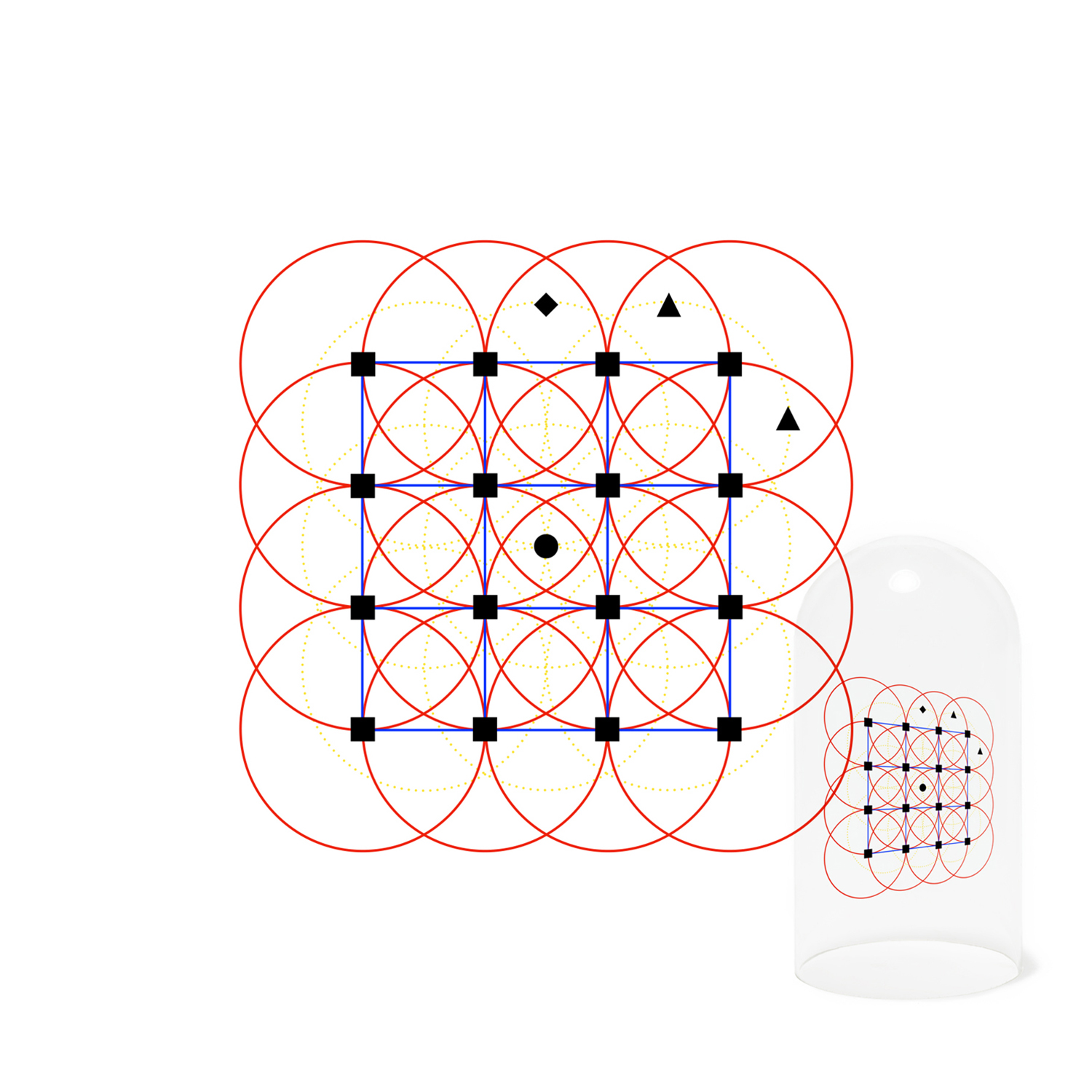
Fig. 3. Coppice visual representation of the spatial scheme of the Chicago Laboratory for Electroacoustic Theatre (CLEAT), a 16-channel sound system and 2.1 PA system housed in Elastic Arts, Chicago, and its binaural capture and elaboration, Sonic Observation (2022), disc three from Draw Agreement (Ferns Recordings, 2023). (© Future Vessel)

Fig. 4. Detail view of the Chicago Laboratory for Electroacoustic Theatre’s (CLEAT) hemispherical speaker system of 16 independent channels with 6 mono loudspeakers each, designed by Stephan Moore. (© Future Vessel)
Sonic Observation, disc three from Draw Agreement (Fig. 3) was originally composed for the Chicago Laboratory for Electro-Acoustic Theatre (CLEAT) multi-channel audio array (Fig. 4) with an additional and 2.1 PA system, to diffuse Hourglass in situ at Elastic Arts in Chicago where the CLEAT system is housed. Following the metaphorical schemes of the observatory, Hourglass presents fragments of Coppice’s first three studies in a series of conjunctions (juxtaposed samples) that suggest the observation of celestial motions and events, with transits (single-occurrence samples) and orbiting objects (similar samples spaced out in time) to evoke an overall sense of sound, space, and time traversal.
As a recording titled Clocks in Flux (Elastic Capture-Source Diffusion post-CLEAT), this work within Sonic Observation follows the exploding and collapsing techniques of production as previously described, as it frames the actual multi-channel diffusion of sounds in a stereo document. Approaching the act of documentation compositionally, the capture of the live event using CLEAT consisted of placing a set of binaural ears (simulating the human head) on a rotating platform at the center of the space that a seated audience surrounded, recording the sphericity of the space for eventual headphone listening. Subverting the alleged fidelity of binaural recording to binaural listening, however, is a headlock audio composition juxtaposing additional sounds against that documentation.
An elaborate multi-tiered document, Clocks in Flux integrates multiple forms of timekeeping and time-stamping, actual and fictional, forward and backward, such as ‘one,’ ‘now,’ ‘2020,’ ’15 seconds,’ and ‘8:43 PM,’ corresponding to moments of recording, and any other moments that the recording may coincide with when reproduced. This timekeeping is heard both within the documentation plane of the venue and ‘outside’ of it as part of the headlock audio.
Functioning as a kind of audio transparency, the headlock audio in Clocks in Flux includes sounds additional to what was heard on-site during the CLEAT event (Fig. 5). This is a convoluted juxtaposition: binaural audio’s representation of sound as a surrounding (around a listener’s head), and affixed headlock audio’s representation of sound as mental sound or sound lodged ‘inside the head’ (or literally, sound ‘external to the binaural dummy head’). Two superimposed auditory realities that a questionable timekeeping lattice intersects.
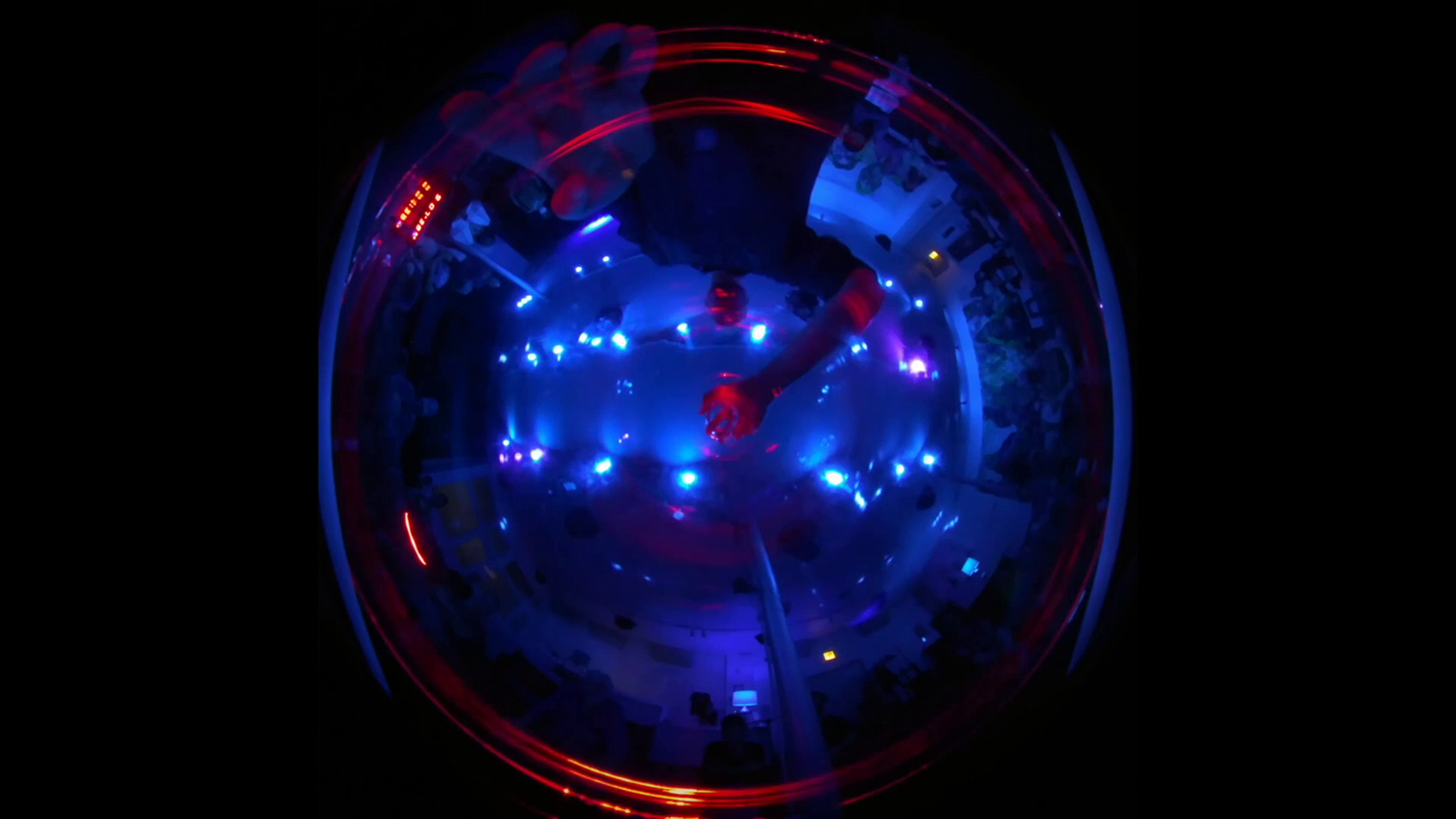
Fig. 5. 360º visual point of view of the binaural ears that captured the Coppice Sonic Observation performance at Elastic Arts, Chicago, 8 July 2022. Still image from Coppice retrospective video showtimecapsule, 2023, <https://youtu.be/BQIahQXtSAk>. (© Future Vessel)
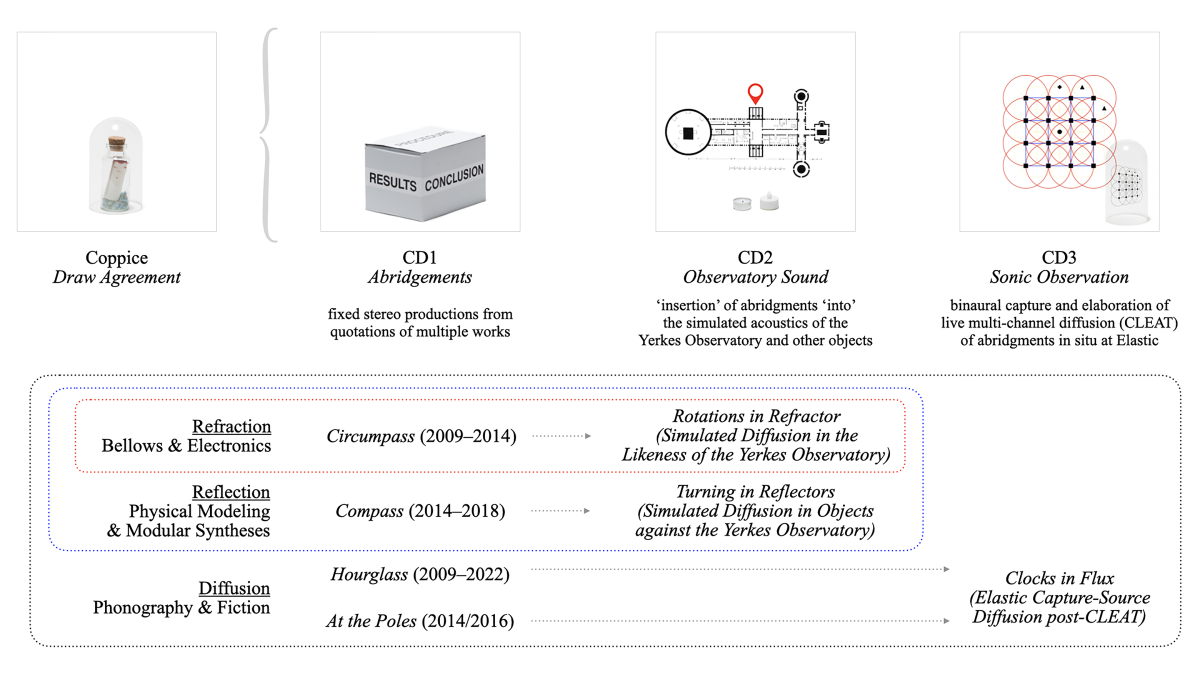
Fig. 6. Visualization of compositional organization in Coppice Draw Agreement (Ferns Recordings, 2022), showing correspondences between works, studies and timelines, and the nesting of works within others. (© Future Vessel)
A Spatiotemporal Synthesis
So far, Coppice’s techniques in auditory nesting (Fig. 6) have been described. These involve abridgments of distinct sonic palettes, the insertion of those abridgments into speculative sonic frames out of simulated and actual diffusions. Like auditory nesting vessels, this culmination in Coppice’s retrospective displays a convolution of processes that emphasizes a mediative logic and rich auditory variations offered to a listener. As a triskelion, each part stabilizes one another forming the cross-referenced spatiotemporal structure that is Draw Agreement, in review:
Abridgements (73 minutes) abbreviates Coppice’s three studies from 2009–2022.
Observatory Sound (35 minutes) simulates the insertion of Coppice’s first two abridgments (Compass and Circumpass) into the acoustics of the Yerkes Observatory, an instrument and an effect alike, including many recordings of the mechanical movements of the Yerkes’ domes, floors, shutters and telescopes: the sounds of alignment and calibration to peer into the cosmic past.
Sonic Observation (60 minutes) binaurally documents Coppice’s actual diffusion of its third abridgment (Hourglass, and also At the Poles) using the CLEAT system on-site at Elastic, and elaborates upon it with additional audio and editing as Clocks in Flux. Excluding observatory sounds, Sonic Observation represents an hour-long drift in fragmented music’s conjunctions, transits, and orbits.
While these nested mediations appear complex, they mirror the ubiquitous and cascading hypermediated realities that make up today’s postphenomenological everyday, a condition that Draw Agreement invites contemplation of by means of audition. Once grasped, the oscillation of various kinds of auditory spaces can be sensed as a dimensional effect that situates listening amid multiple shifting spaces in reference to different timelines. Engaging a mise en abyme effect sets in motion layered subjectivities considering the freedom a listener has to reproduce these recordings in contexts of their choosing.
The purpose of Draw Agreement (Fig. 7) is to recapitulate, in a relatively brief timeframe, the shapeshifting identities of Coppice’s sonic characteristics across its studies spanning 13 years. It encapsulates an overarching experimental music process and extends it into the future. What it offers a listener is a probing of soundspacetime which, despite appearing linearly, may also be grasped multi-dimensionally in its cross-relations and flux of auditions. As the vanishing point itself, a listener engages, varies and alternates between auditory perspectives while traversing the actual and simulated movements of a musical idea (a ‘gestalt switching’ no different than those triggered by multistable images such as optical illusions).
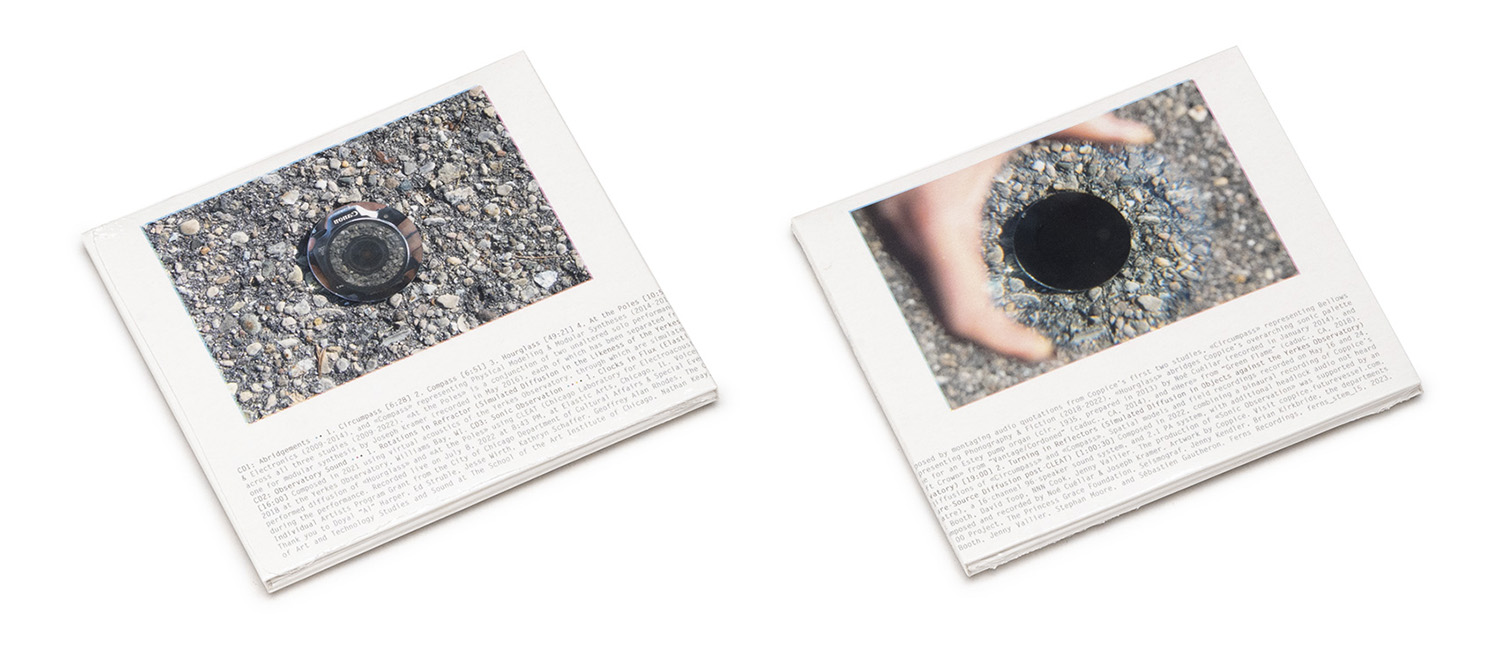
Fig. 7. Back (left) and front (right) views of Coppice Draw Agreement (Ferns Recordings, 2023) three CD set. (Photos © Soundohm)
In the audio paper, Coppice uses metaphoric and poetic language to describe its preservation of the acoustics of the Yerkes Observatory, and its use of it as a tool for further self-reflexive experimentation. This includes the notions of observatory sound and sonic observation brought into greater detail in Draw Agreement. These notions make reference to the acoustics belonging to the observatory, and invitations to experience correspondences through Coppice’s auditory perspective; speculative sonic frames through which today’s increasingly present lens of technology may be audited.
Following concepts in 20th century experimental and avant-garde music, that listening in itself is an act of composing (Cage, Oliveros, Lucier, among others), Coppice seeks to emplace listening amid energies and motions of a music spread across domains, betwixt actual and simulated spheres of sound diffusions. To guide such experience, the metaphorical realities of sonic observation and observatory sound, and the refractive and reflective telescopic are used to evoke the vastness of a musical cosmology out of which subjective constellations may be made. Coppice’s musical abstractions pertain to technical and perceptual variations in music production including auditory experimentation. Draw Agreement functions as a ‘celestial map’ for navigating these.
As a temporal art, the listener reconfigures ephemeral puzzles in their pastime. Given visual centricity, visual metaphor may help grasp the depths of auditory experimentation and its invisibility. Crafting visuals with the intention of auditory support when viewed, Coppice works address ‘the ear’ (and ‘the mind’s ear’) to tell imagination where to go.
A Time Machinic Future
The word ‘coppice’ defines a wooded area where trees are periodically cut back to stimulate their growth. The practice of coppicing is synonymous with what Coppice in artistic and technical terms describes as the oscillation between exploding and collapsing working techniques. Accretion and excision, reference and consequence, obsolescence and preservation. The marked shift from one study to the next alludes to the cyclical horticultural practice of coppicing.
Draw Agreement (Fig. 8) brings Coppice’s first three glossaries of study, between 2009–2022 to completion. On the other side, which is already (or was), is a continued exploration of a longstanding pattern of interest in the cross-referencing of objects (musical, technological, auditory and imaginative) in their actual and represented conditions: as is and as if.
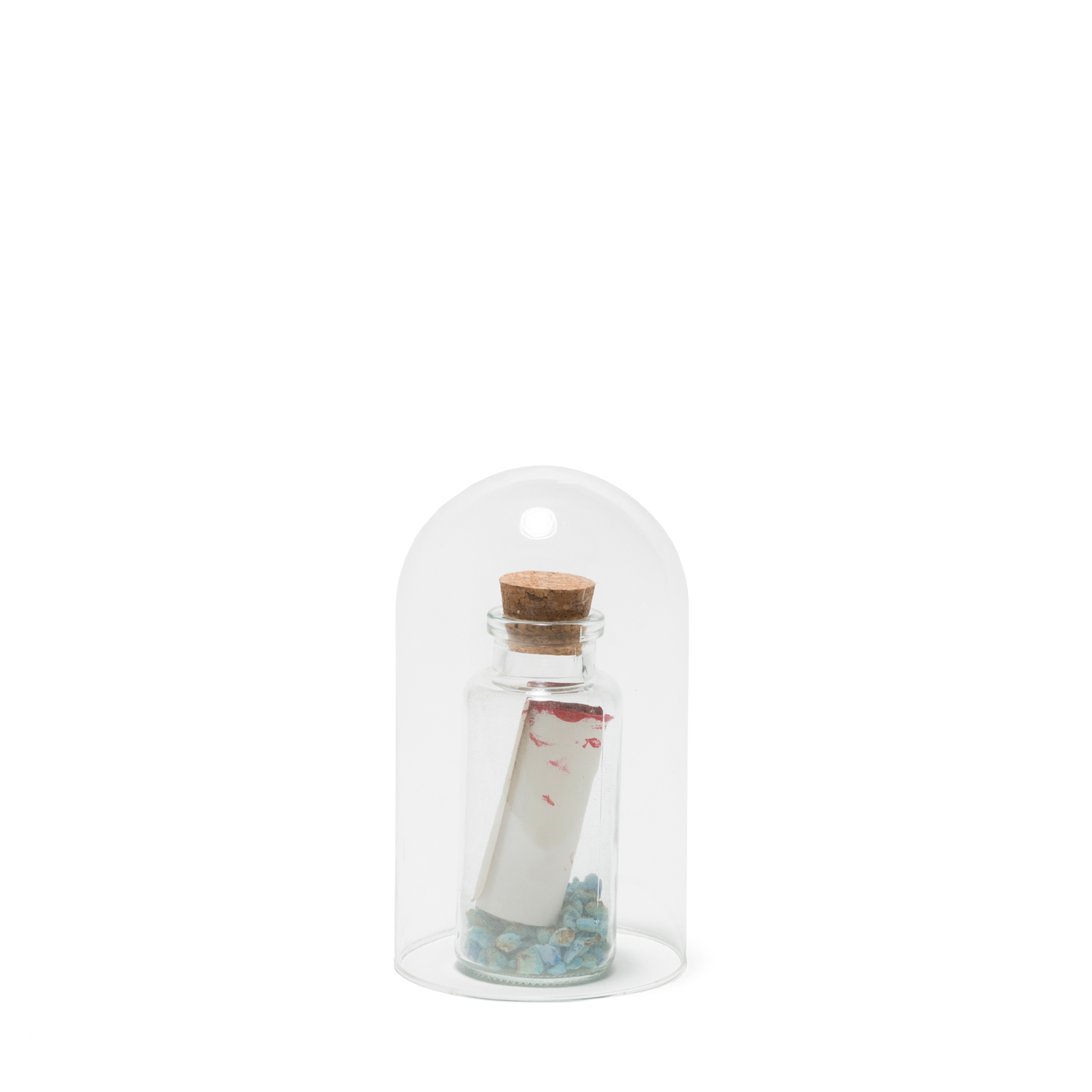
Fig. 8. Digital cover art for Coppice Draw Agreement (Ferns Recordings, 2023), displaying a paper scroll used as a stamp with red paint (in 2014), and burnt copper sulfate crystals (in 2017), kept in a glass bottle and displayed in a glass bell jar (in 2018). (© Future Vessel)
References and Notes
¹ Don Ihde, Technology and the Lifeworld: from Garden to Earth (Bloomington, IN: Indiana University Press, 1996), 9.
² Ibid.
³ Ibid., 10.
⁴ Ibid.
⁵ Don Ihde, Listening and Voice: Phenomenologies of Sound (Albany, NY: State University of New York Press, 2007), 239.
⁶ Ibid., 257.
⁷ Don Ihde, Acoustic Technics (Lanham, MD: Lexington Books, 2016), 59.
⁸ Ibid., 60.
⁹ Ibid., 61.
¹⁰ Ibid., 57.
¹¹ Ibid., 52.
¹² Noé Cuéllar and Joseph Kramer, “Legend of Passing Time with Instruments and Captions,” Future Vessel, 2021, <coppice.futurevessel.com/legend>, accessed 23 June 2024.
¹³ Noé Cuéllar and Joseph Kramer, “Stewardship to Obsolescence and Preservation: Listening to Specimen Music Through Yerkes Observatory’s Refractor and Reflector Telescopes,” audio paper, in Sounds of Science, edited by Sanne Krogh Groth and Henrik Frisk (Seismograf, 2021), <doi.org/HTTPS://DOI.ORG/10.48233/SEISMOGRAF2602>.
¹⁴ Marshall McLuhan and Edmund Carpenter, “Acoustic Space,” essay, in Explorations in Communication: An Anthology, edited by Marshall McLuhan and Edmund Edmund, (Boston, MA: Beacon Press, 1970), 68.
¹⁵ Michel Chion, Sound: An Acoulogical Treatise, (Durham, NC: Duke University Press, 2016), 154.
¹⁶ Noé Cuéllar and Joseph Kramer, “Dissecting Operations in Spatial Compositions through Acoulogy as Sonic Thinking,” Future Vessel, 2024, <coppice.futurevessel.com/dissecting>, accessed 23 June 2024.
¹⁷ Michel Chion, Sound: An Acoulogical Treatise, (Durham, NC: Duke University Press, 2016), 268.
